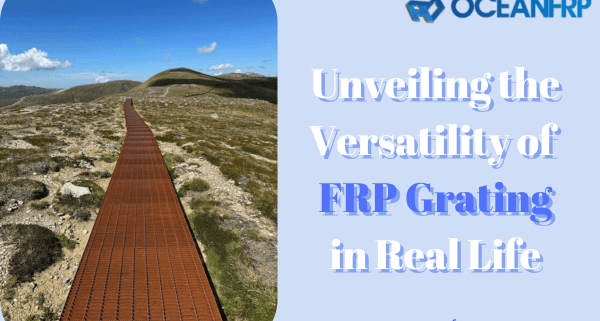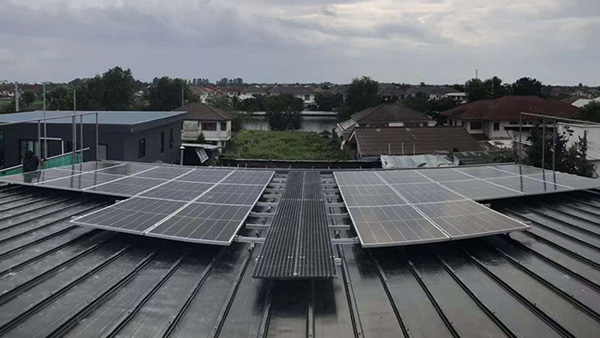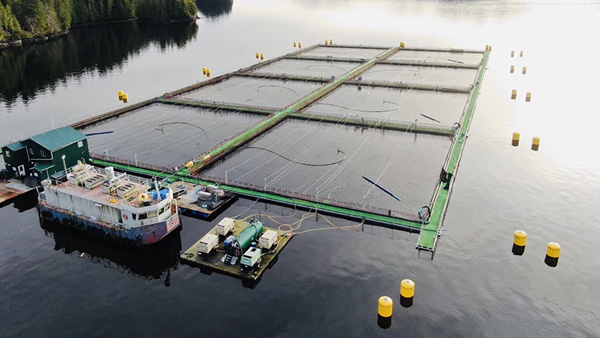Unveiling the Versatility of FRP Grating in Real Life
FRP grating, also known as Fiberglass Reinforced Plastic grating, is a versatile material revolutionizing industries worldwide. Its exceptional properties, including high strength, corrosion resistance, and durability, have made it a go-to choice for modern industrial applications. As the demand for sustainable solutions rises, FRP grating emerges as a frontrunner due to its eco-friendly nature and long-lasting performance. This blog will delve into the intricacies of FRP grating, exploring its composition, benefits, and diverse applications across various sectors.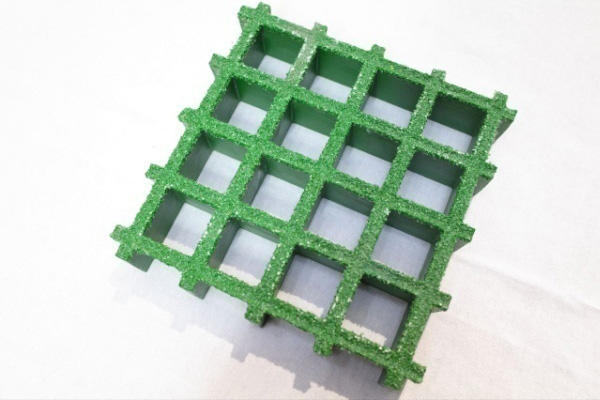
Understanding FRP Grating
Resin and Fiberglass Matrix
The composition of FRP grating involves a meticulous blend of thermosetting plastic resins and glass fiber. This fusion results in a material that exhibits exceptional properties, making it highly sought after in various industries. The resin acts as a binding agent, holding the fiberglass together to form a robust matrix that provides structural integrity and durability to the grating.
Innovations in the manufacturing process have led to the development of new resin formulations, enhancing the mechanical properties and environmental resistance of FRP grating. These advancements have addressed challenges faced in projects, ensuring that the final product meets stringent quality standards.
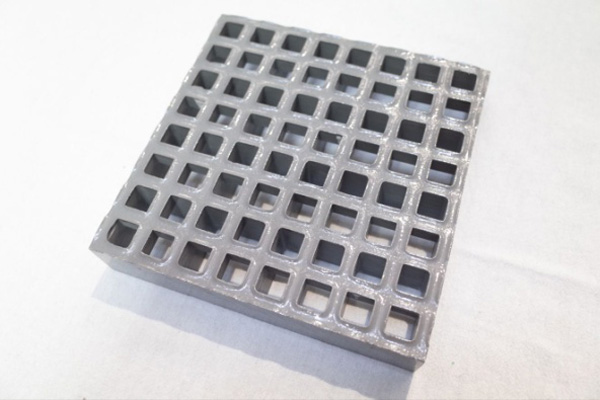
Production Process
The production process of FRP grating is a precise and intricate procedure that requires attention to detail at every step. It begins with the preparation of the resin mixture, which is then combined with fiberglass reinforcement to create a composite material. This mixture is carefully poured into molds of various shapes and sizes, allowing it to cure and solidify into the desired form.
One key advantage of the production process is the ability to customize FRP grating according to specific requirements. Manufacturers like OCEANFRP® offer a wide assortment of grating products tailored for different applications, including stair treads, platforms, covered gratings, trench covers, and drain covers.
A standout feature of FRP grating is its remarkable strength-to-weight ratio. Despite being lightweight, it exhibits exceptional strength properties that rival traditional materials like steel. This characteristic makes FRP grating an ideal choice for applications where load-bearing capacity is crucial but weight restrictions are also a consideration.
The high strength-to-weight ratio of FRP grating allows for easy installation and handling while maintaining structural integrity. Whether used in industrial walkways or marine environments, this property ensures that the grating can withstand heavy loads without compromising on performance.
Applications in Various Industries
Chemical Processing
FRP grating has revolutionized the chemical processing industry with its exceptional corrosion resistance benefits. When exposed to harsh chemicals and corrosive substances, traditional materials often deteriorate rapidly, leading to safety hazards and costly replacements. However, FRP grating offers a sustainable solution by withstanding corrosive environments without compromising its structural integrity. This durability ensures a longer lifespan for industrial platforms, walkways, and flooring systems.
In terms of safety and durability, FRP grating excels in providing a secure working environment for chemical processing facilities. Its non-slip surface reduces the risk of accidents caused by slippery conditions, enhancing employee safety. Moreover, the robust nature of FRP grating guarantees long-term performance under heavy machinery and equipment loads. By choosing FRP grating, chemical plants prioritize safety standards while optimizing operational efficiency.
Wastewater Treatment
In wastewater treatment facilities, the presence of moisture and contaminants necessitates flooring solutions that offer both reliability and longevity. FRP grating addresses these requirements by featuring a non-slip surface that enhances traction even in wet conditions. This anti-slip property minimizes the chances of slips and falls among workers, promoting a secure working environment.
The long life span of FRP grating further contributes to its suitability for wastewater treatment applications. Unlike conventional materials that degrade over time due to exposure to moisture and chemicals, FRP grating remains resilient against corrosion and wear. By investing in FRP grating, wastewater treatment plants ensure sustainable infrastructure that withstands the rigors of daily operations.
Oil and Gas
The oil and gas industry relies on materials that can withstand challenging environments while maintaining structural integrity. FRP grating, known for being lightweight yet strong, meets these demands effectively. Its high strength-to-weight ratio allows for easy transportation and installation without compromising on durability or load-bearing capacity.
For maintenance-free structures in oil and gas facilities, FRP grating emerges as an ideal choice. Traditional materials often require frequent upkeep to prevent corrosion or degradation from exposure to harsh elements. In contrast, FRP grating offers a low-maintenance solution that retains its quality over time, reducing operational downtime and maintenance costs.
Construction
Versatile Flooring Solutions
FRP grating offers a wide range of flooring solutions that cater to diverse industrial needs. From walkways to platforms, the versatility of FRP grating makes it an ideal choice for various construction projects. The durability and corrosion resistance of FRP grating ensure long-lasting performance in demanding environments.
- Industrial Walkways:FRP grating provides a reliable surface for industrial walkways, offering a sturdy platform for workers to navigate safely. Its non-slip properties enhance traction, reducing the risk of accidents in high-traffic areas.
- Platform Structures: UtilizingFRP grating for platform structures enhances structural integrity while maintaining a lightweight design. This feature simplifies installation processes and allows for easy customization based on specific project requirements.
- Covered Gratings: The use of covered gratings made fromFRP ensures protection against environmental elements such as rain or snow. These gratings offer a secure covering solution for underground utilities or storage areas.
Customization Options
Customization is key when it comes to selecting the right FRP grating for construction projects. Manufacturers like OCEANFRP® provide an array of customization options to meet individual specifications and design preferences. Whether it’s color selection or sizing requirements, tailored solutions enhance the overall functionality and aesthetics of FRP grating installations.
- Color Variations:FRP grating is available in an assortment of colors, including red, yellow, gray, black, blue, and green. This color variety allows for seamless integration into different architectural designs while providing visual appeal.
- Size Configurations: Tailoring the size configurations ofFRP grating ensures precise fitting for specific applications. Customized dimensions guarantee optimal coverage and support, enhancing structural stability and load-bearing capacity.
- Specialized Designs: For unique project demands, specialized designs can be crafted to accommodate intricate layouts or structural requirements. These custom-designedFRP gratings offer innovative solutions tailored to address specific challenges in construction settings.
Future Trends and Recommendations
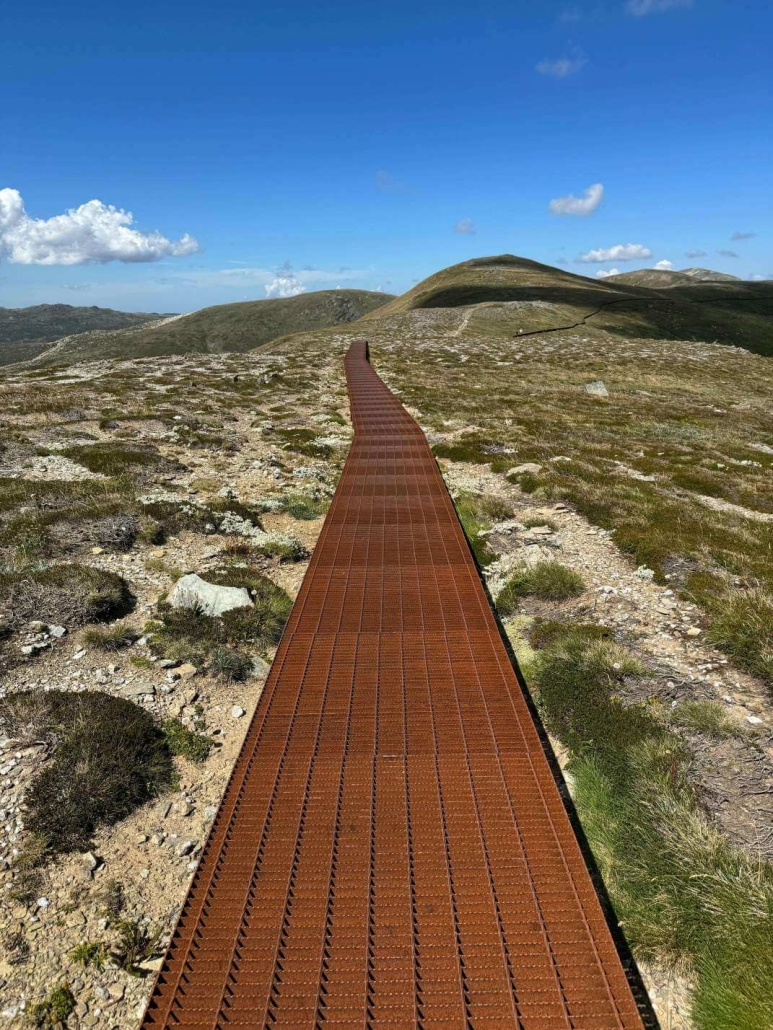
Innovations in FRP Grating
New Materials
Innovations in the field of FRP grating continue to drive advancements, particularly in the development of new materials. Manufacturers are constantly exploring novel resin formulations and fiberglass combinations to enhance the performance and durability of FRP gratings. These new materials offer improved resistance to corrosion, chemicals, and environmental factors, making them ideal for a wide range of industrial applications.
One notable advancement is the integration of additives that further reinforce the structural integrity of FRP gratings. By incorporating specialized fillers or reinforcements into the composite matrix, manufacturers can tailor the properties of the grating to meet specific project requirements. This customization ensures that FRP gratings can withstand varying loads, temperatures, and exposure conditions without compromising on quality.
To address evolving industry needs, research and development efforts are focused on creating sustainable materials that align with eco-friendly practices. The introduction of bio-based resins and recycled fiberglass components showcases a commitment to environmental stewardship while maintaining the high performance standards expected from FRP gratings. These eco-conscious materials not only reduce carbon footprints but also contribute to a circular economy approach within the manufacturing sector.
Advanced Manufacturing Techniques
Advancements in manufacturing techniques play a pivotal role in enhancing the quality and efficiency of FRP grating production. From precision molding processes to automated assembly lines, manufacturers are leveraging cutting-edge technologies to streamline operations and optimize product consistency. By embracing automation and robotics, production facilities can achieve higher levels of accuracy and repeatability in creating complex grating designs.
One key trend shaping the future of FRP grating manufacturing is digital twin technology, which enables virtual simulations of production processes before physical implementation. This innovative approach allows manufacturers to identify potential design flaws, optimize material usage, and minimize waste during fabrication. Through real-time monitoring and data analytics, companies can enhance quality control measures and ensure that each FRP grating meets stringent performance standards.
Furthermore, additive manufacturing techniques such as 3D printing are revolutionizing how custom FRP gratings are produced. This additive process offers unparalleled design flexibility, allowing intricate geometries and patterns to be realized with precision. As additive manufacturing continues to evolve, it presents exciting opportunities for rapid prototyping and on-demand production of bespoke FRP grating solutions tailored to specific project requirements.
Enhancing performance through tailored resin and glass fiber combinations is key in maximizing the benefits of FRP grating. Polyester resin, renowned for its lightweight and high-strength properties, significantly elevates the durability and load-bearing capacity of FRP gratings. The corrosion resistance, UV stability, and anti-skid surface of FRP gratings make them indispensable across industries like construction, oil & gas, wastewater treatment, food & beverage, and chemical processing. The future outlook for FRP grating remains promising as advancements continue to meet evolving industrial demands with sustainable solutions.

